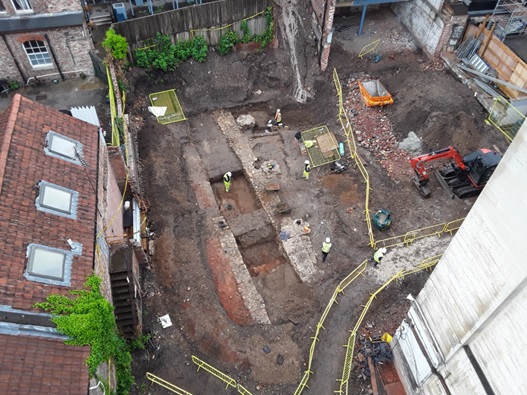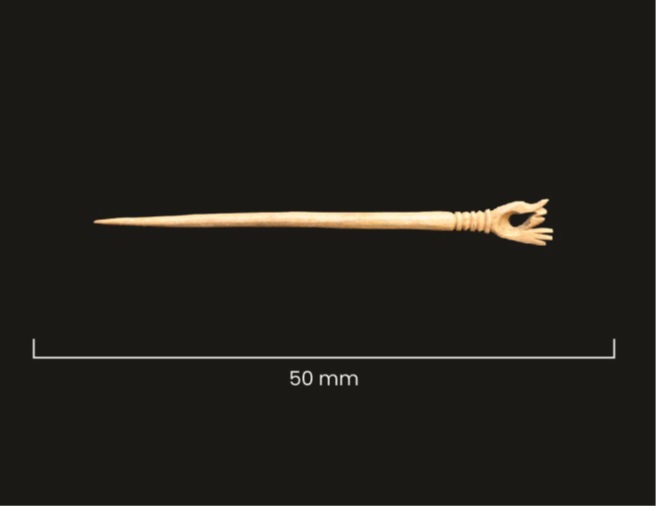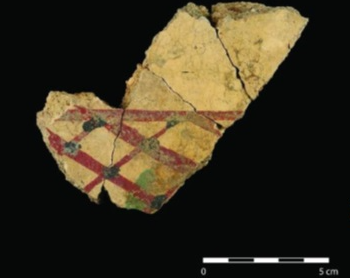Guildhall
- Posted in:
- Guildhall
- Roman
- Friary
- Excavation
Between 2012 and 2021 extensive archaeological investigation has taken place at the Guildhall prior to and during the refurbishment of the main hall, and the construction of south and north annex.
The Guildhall complex is situated on the north-east side of the River Ouse. It is located immediately outside of the Roman fortress, just up-steam from the Roman river crossing and was the site of a medieval Augustian Friary.
In 2012, as part of the York 800 celebrations, York Archaeological Trust opened three trenches as part of a community excavation; inside and immediately outside the Guildhall building and within the Mansion House cellar. They examined the footings of the Guildhall on top of Common Hall Lane (an underground passageway leading to the river), looked to see if archaeology survived beneath the Mansion House Cellar and characterised the archaeology beneath the ground surface at the front of the hall. These trenches could only access the upper metre or so of archaeology on the site.
Further investigations took place in 2014 at the Hutments site, adjacent to the Guildhall by AOC Archaeology. The Hutments name derived from a temporary wooden building that stood on the site from the 1930s until 2014. This initial investigation, partially carried out as a community project, was an attempt to characterise and identify the archaeological make-up of the upper 1.5m in this part of the site.
However, it was during the construction phase of the south range (York Archaeological Trust 2019) and north annex that the majority of archaeological investigation took place and where the most important findings were made. Between 2018-2020 several phases of archaeological monitoring and excavation were undertaken by York Archaeological Trust. The North Annex works are listed under EYO8004. There are several reports available on the HER.
The most recent analysis report brings all of this investigation together and provides the most detailed results of the works. The findings will be published on Internet Archaeology and will also be distilled into an easy to digest version for the layperson by the end of the year.
What was found?
The investigations confirmed that human activity on the site began with the remodelling of the steep riverside bank which made up most of the site. By the late 1st century the natural slope was cut back into a series of terraces onto which a succession of domestic buildings were constructed and periodically replaced during the 2nd - 3rd centuries. Roman plaster was found revealing hints of some colourful interiors although the majority of pieces found were whitewashed.
Following the departure of the Romans the site lay largely dormant.
Intensive activity on the site was not re-established until the late 11th or 12th century when the last remaining Roman buildings were dismantled and the land used for waste disposal. This raised the ground level further.
By the mid 13th century an Augustinian friary was established on the site. Large stone walls and a substantial structure incorporating a large edge-set tile hearth believed to be from this period were revealed. A graveyard was established and appears to have remained in use until the 16th century. Ten individual skeletons were identified but there were over 1000 pieces of disturbed human bone across the area. Almost all human remains were from adults. Radiocarbon dating of two individuals date the graveyard to the period of the friary (15th-16th century).
Following the Dissolution, the friary buildings were dismantled. Soil built up on the site from the late 16th through to the 18th century, presumably relating to gardens at the rear of Lendal.
Buildings again encroached onto the site from the 19th into the 20th century with the construction of the Guildhall’s North Annexe (1902) and the Hutments (1930s).
Preservation in-situ
The Guildhall site, given its riverside situation, has some of the deepest archaeological levels in the city. The earliest archaeological deposits on the site were only noted using boreholes and on higher levels of Roman terracing closer to the Lendal frontage than the riverside. Excavation only took place in areas which would be impacted by the construction works and at select points for research purposes – when will we get to look at archaeology at those depths again?!
The friary walls and whatever else lies between and beneath them has been preserved beneath the new North Annex building – perhaps we will get to investigate in another hundred years?


